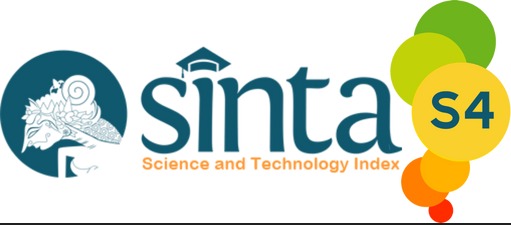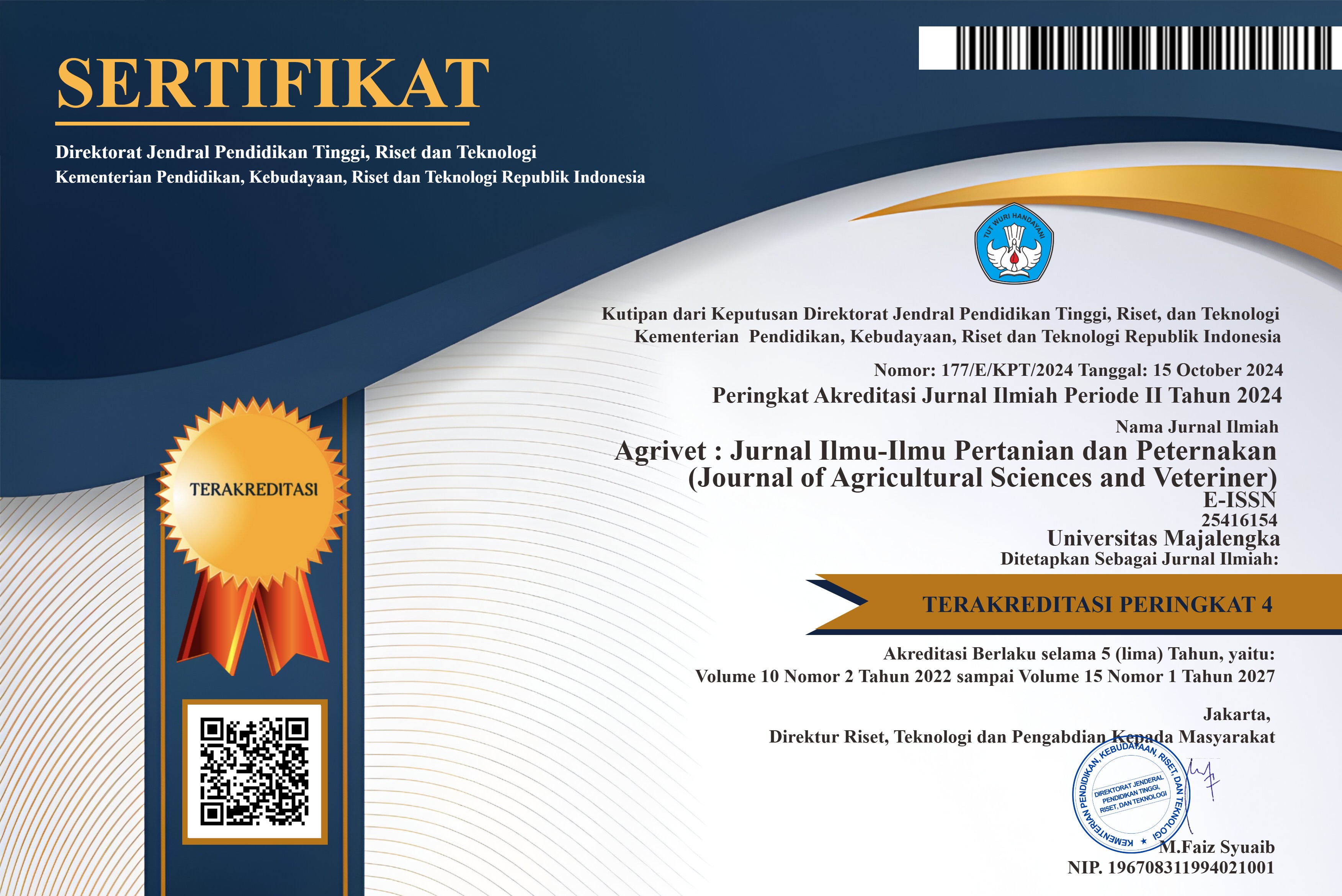Analisis pendapatan usaha gula aren di Desa Cawang Lama Kabupaten Rejang Lebong
DOI:
https://doi.org/10.31949/agrivet.v11i2.7740Abstract
The aim of this research was to analyze palm sugar business income in Cawang Lama Vilage, Rejang Lebong Regency. The location was chosen purposively because this area is a large producer of palm sugar and runs its business sustainably. This research method was obtained from quantitative data and questionnaires from research respondents. This research was carried out purposively in Cawang Lama Village. The things analyzed in this research are income and efficiency values. The results of the analysis showed that the income obtained was IDR1,093,383.-. This is influenced by the amount of revenue and production costs incurred each month. This income is relatively small but helps the family's economy, because palm sugar in this area is mostly produced only as a side job. Due to limited raw materials and the area of oil palm plantations owned. On average, they work as coffee farmers and rice farmers as their main job. The palm sugar business in one of the largest palm sugar producing villages in Selupu Rejang District has an efficiency value of 1.56, which means the business is feasible to run. It can be concluded that the palm sugar business in Cawang Lama Village, Rejang Lebong Regency has good business feasibility, and every unit of costs incurred in this business can be returned 1.56 times.
Keywords:
Keywords: Business,Income, Palm Sugar, Production costs, RevenueDownloads
References
DAFTAR PUSTAKA
Andaryogi D, Awami SN, Fachhriyan HA, Subekti E. 2022. Analisis Pendapatan dan Kelayakan Usaha Gula Aren di Kecamatan Sumowono Kabupaten Semarang. Proc Ser Phys Form Sci. 4. https://doi.org/10.30595/pspfs.v4i.507
Hernanto F. 1989. Ilmu Usahatani. Jakarta: Penebar swadaya.
Hotman Tuah, Ambarita OJ. 2022. Analisa Kelayakan Dan Pendapatan Usahatani Aren (Studi Kasus di Nagori Sihaporas, Kecamatan Pamatang Sidamanik, Kabupaten Simalungun). J Agrilink. 4(1). https://doi.org/10.36985/jak.v4i1.371
Makkarennu M, Rum MF, Ridwan R. 2018. Analisis pendapatan usaha gula aren pada masyarakat yang tinggal di dalam dan di sekitar hutan. Perennial. 14(2). https://doi.org/10.24259/perennial.v14i2.5309
Pramudya, F., Gabrienda, G., & Novitasari H. 2021. Analysis of ground coffee business in rejang lebong district analisis usaha kopi bubuk di kabupaten rejang lebong. J Inov Penelit [Internet]. 1:2583–2586. https://stp-mataram.e-journal.id/JIP/article/view/522
Pramudya, FN., Bainamus, PM., Oktoyoki H. 2021. Analisis Usaha Dan Nilai Tambah Agroindustri Gula Arendi Kabupaten Rejang Lebong. Media Bina Ilm. 16:6897–6902.
Pramudya FN, Cahyadinata I. 2012. analisis usaha budidaya jamur tiram putih (pleurotus ostreatus) di kecamatan curup tengah kabupaten rejang lebong. J AGRISEP. 11(2). https://doi.org/10.31186/jagrisep.11.2.237-250
Soekartawi. 2005. Agribisnis Teori dan Aplikasinya. Jakarta: Raja Grafindo Persada.
Sudaryanto. 2002. Kebijaksanaan dalam Pengembangan Agribisnis. Jakarta: Penebar swadaya.
Published
How to Cite
Issue
Section
License
Copyright (c) 2023 Febri Nur Pramudya, Putri Milanda Bainamus, Adnan

This work is licensed under a Creative Commons Attribution-ShareAlike 4.0 International License.
An author who publishes in the Jurnal Agrivet agrees to the following terms:
- Author retains the copyright and grants the journal the right of first publication of the work simultaneously licensed under the Creative Commons Attribution-ShareAlike 4.0 License that allows others to share the work with an acknowledgment of the work's authorship and initial publication in this journal
- The author is able to enter into separate, additional contractual arrangements for the non-exclusive distribution of the journal's published version of the work (e.g., post it to an institutional repository or publish it in a book) with the acknowledgment of its initial publication in this journal.
- The author is permitted and encouraged to post his/her work online (e.g., in institutional repositories or on their website) prior to and during the submission process, as it can lead to productive exchanges, as well as earlier and greater citation of the published work












